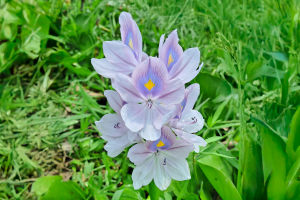Introduction: A Simple Way to Multiply Plants
Have you ever admired a friend's plant collection and thought, "I wish I could have one of those!"?
Good news! You can. Growing plants from cuttings is one of the easiest ways to expand your garden or indoor plant collection. It's cost-effective and often more successful than starting from seeds. Plus, it's a fun and rewarding process that can be done with just a few basic supplies. Let's walk through the simple steps you can take to propagate your favorite plants using cuttings.
What You'll Need for Propagation
Before you get started, make sure you have everything you need:
• Sharp scissors or pruning shears – Clean and sharp tools are essential for making clean cuts, which help prevent damage to the plant and reduce the risk of disease.
• Glass of water or potting soil – The two most common mediums for rooting cuttings are water or soil. You can experiment with both to see which method works best for your plant.
• Container or planter– If you're rooting in soil, a small container will work perfectly. A plastic bag or clear container can help maintain humidity.
• Rooting hormone (optional) – This can be applied to the cutting to promote quicker and stronger root growth, though many plants root well without it.
Step 1: Select the Right Plant and Cutting
Not all plants propagate the same way, so it's important to choose the right ones. Some of the best plants for beginners include pothos, spider plants, succulents, and ivy. These plants are forgiving and easy to propagate.
When selecting your cutting, look for a healthy, non-flowering stem. You want to cut just below a leaf node, which is where leaves grow out from the stem. Generally, a 4-6 inch piece of stem works well.
Step 2: Cut and Prepare the Cutting
Using your sharp scissors or pruning shears, cut the selected stem just below a leaf node. Try to make a clean, straight cut to avoid crushing the stem, which can impede growth.
Once you've made the cut, remove the lower leaves from the stem—leaving only a few leaves at the top. This helps direct the plant's energy into growing roots instead of maintaining leaves.
Step 3: Choose Your Rooting Method
Now it's time to decide whether you want to root your cutting in water or soil. Both methods are effective, but each has its advantages.
Water Method
• Place your cutting in a glass of water, ensuring the leaf nodes are submerged but the leaves are not touching the water.
• Change the water every few days to keep it fresh.
• Roots should begin to form in a few weeks, and once they are around an inch or two long, it's time to transfer the cutting into soil.
Soil Method
• If you choose to root directly in soil, fill a small planter with well-draining potting mix.
• Make a hole in the soil using a pencil or your finger and place the cutting in it.
• Gently press the soil around the cutting to ensure it's secure, and water it lightly.
• Cover the planter with a plastic bag to create a humid environment, but make sure it doesn't touch the cutting.
Step 4: Care for the Cutting
Whether you've chosen the water or soil method, it's important to keep the cutting in a warm, well-lit spot, but not in direct sunlight, as this can cause it to wilt or dry out.
• Watering – If you're rooting in water, be sure to change the water regularly. If using soil, water the cutting gently to keep the soil moist but not soggy.
• Humidity – Cuttings generally prefer high humidity, so you might want to cover them with a plastic bag or create a small greenhouse effect. Just make sure the plastic doesn't touch the cutting.
Step 5: Watch for New Growth
After a few weeks, you should begin to see roots forming. If you're rooting in water, once the roots are about an inch or two long, it's time to move the cutting into soil. If you're rooting in soil, you'll know it's ready to be transplanted once you see new growth emerging from the cutting.


